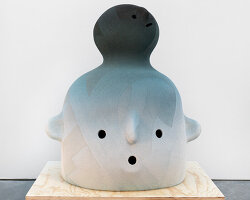
Raku Kichizaemon XV Jikinyu, Ryu (soaring peaks, mountains upon mountains), 2022

yakinuki type raku tea caddy | image courtesy of Raku Museum
KEEP UP WITH OUR DAILY AND WEEKLY NEWSLETTERS
from car wheels to the speedometers and gauges, our list explores the automobile aesthetics that appear in modern watches.
connections: +410
discover our guide to milan design week 2025, the week in the calendar where the design world converges on the italian city.
connections: 7
designed to address climate change, soil degradation, and water scarcity, the system saves up space with a vertical setup.
connections: +1100
from the sterile corridors of the severed floor to the curated domestic spaces outside its walls, every element serves a purpose.
















